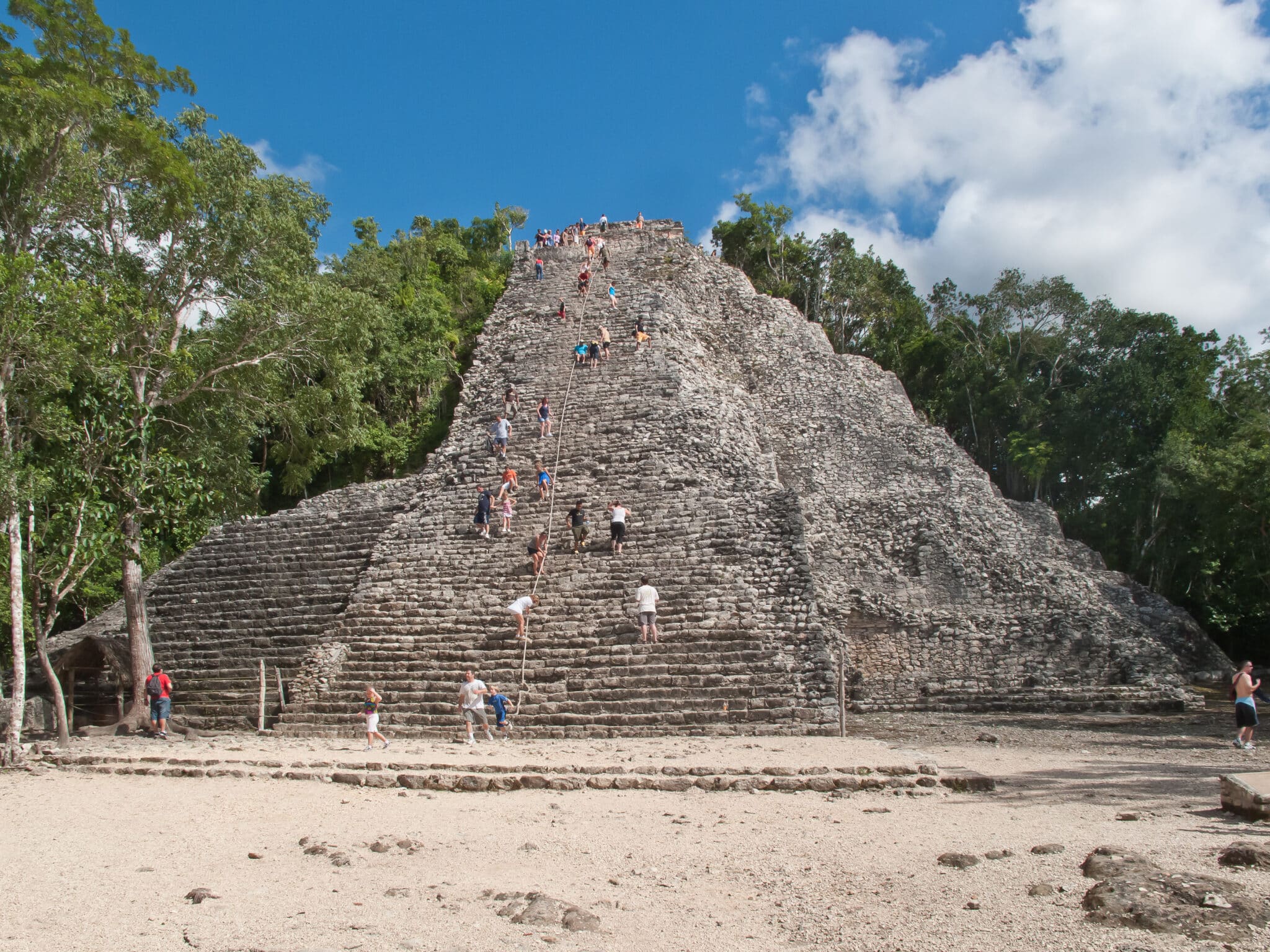Coba travel guide

Coba is an ancient Mayan city in the depths of the jungle of Quintana Roo. It is the largest pre-Hispanic settlement in the Yucatan Peninsula. This area is 27 square miles, and only 5% of its structures are free of jungle. Here is a concise Coba travel guide.
Coba travel guide: What to expect
The building that steals the show is the Nohoch Mul pyramid. With its 42 meters high, it is the tallest in the peninsula. It is the only structure in the archaeological zone of Cobá that you can climb. After conquering a steep staircase, to help you, there is a rope to hold you up. When you reach the top, your mouth will drop as you see a carpet of thick vegetation. It makes you imagine how old this city is and how nature has devoured it.
You will also find the ball game, the Temple of the Frescoes and several stelae. All the vestiges are in zones: Coba, Nohoch Mul, Group of the Paintings, Macanxoc and The Observatory. Here are some other places you should visit on your trip to Coba:
Dive in
Approximately 10 minutes away, there are three cenotes and almost all of them have the peculiarity of being empty, so that you can swim at your leisure. To enter the Cenote Choo-Ha you must descend a wooden staircase that takes you into the cavern, its shallow depth allows you to swim in crystal clear waters that let you see the bottom while admiring the ceiling covered with stalactites.
Cenote Tamcach-Ha is closed, but is illuminated to appreciate its turquoise water, has a depth of 35 meters, platforms for diving, and you can also snorkel. And at Cenote Multum-Ha, located at 18 meters deep, you can see rocks of various sizes under its crystal clear water.
Coba travel guide: What lies beneath
A group of 53 buildings is the oldest of the archaeological zone, located between the lakes Cobá and Macanxoc. However, very few can be visited. Among the main ones is The Church: the second tallest building of the site with 24 meters high, followed by one of the ball games with the game rings engraved with a symbol which is linked to war, sacrifice and death, and there is also an extensive patio with elongated buildings, in some of which there are remains of mural paintings.
